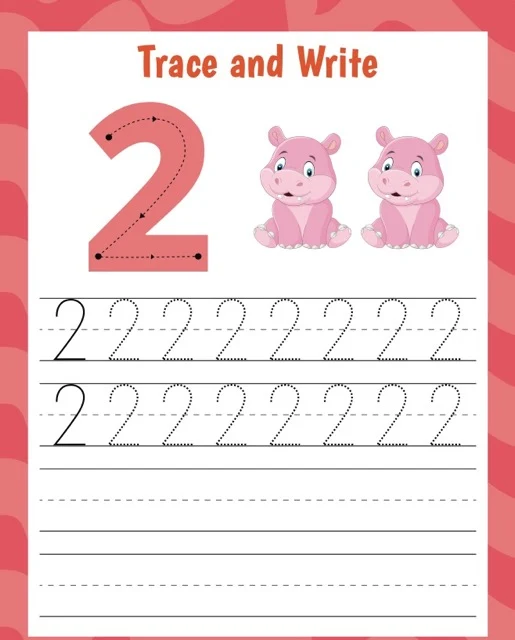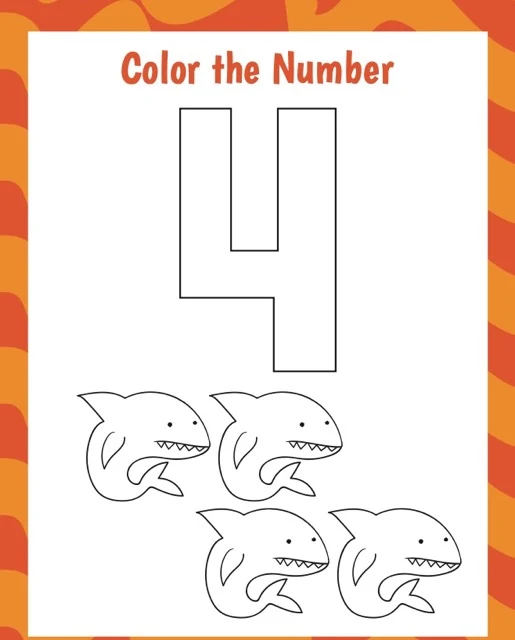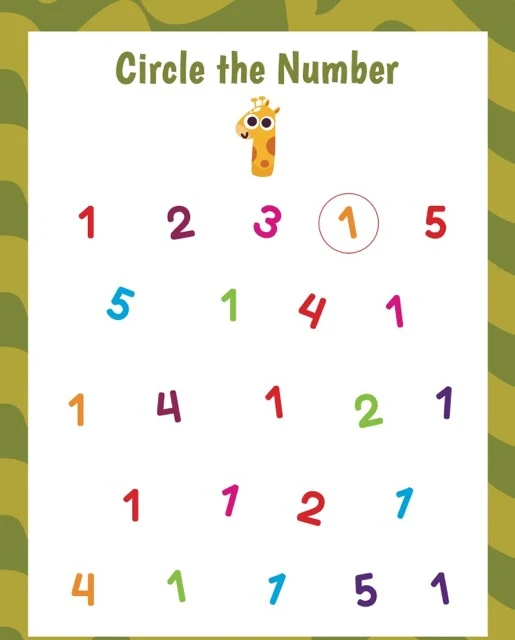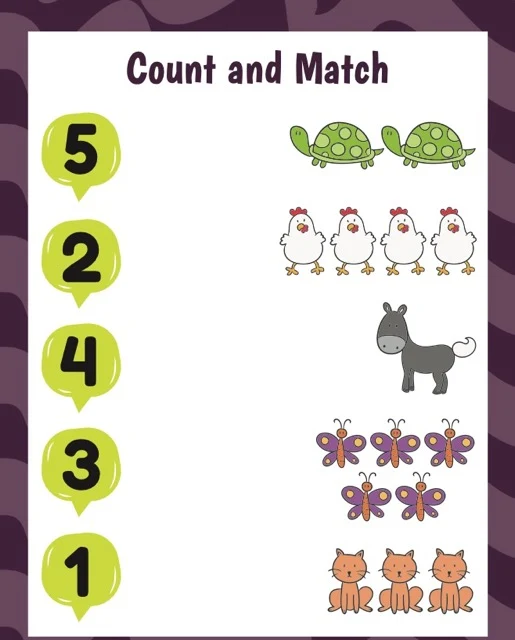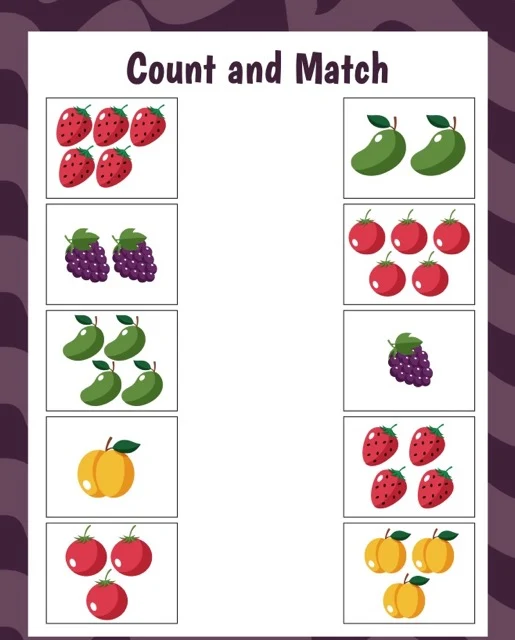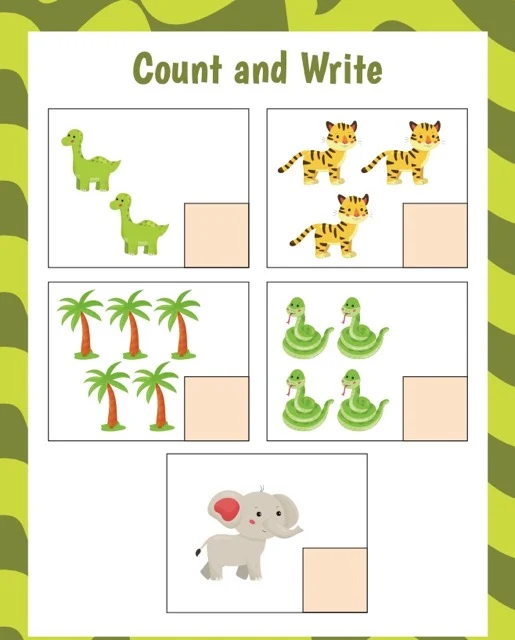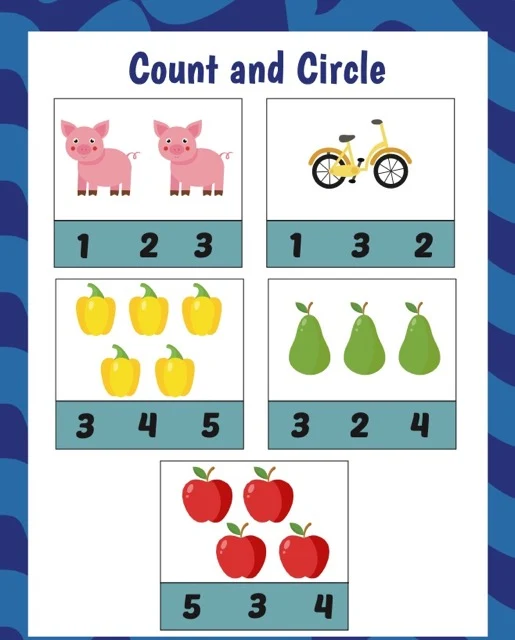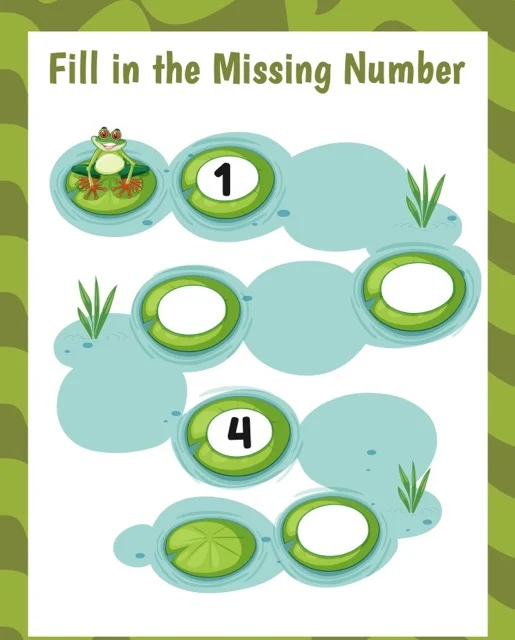Teaching Numbers 1-5: A Comprehensive Guide This document provides a comprehensive guide to teaching children numbers 1-5, emphasizing the foundational importance of mastering these numbers for future math success. It details various engaging teaching strategies, including hands-on activities, real-world applications, and the use of technology. The guide also addresses common challenges children face, offering solutions and assessment methods to track progress. It concludes by outlining the next steps after mastering 1-5, progressing to higher numbers and basic arithmetic. The materials include FAQs, a short quiz, essay questions, and a glossary of key terms.Key Topics
Number teaching
Teaching strategies
Learning challenges
Progress assessment
Early math skills
Teaching Numbers 1-5: A Comprehensive Guide
This document provides a comprehensive guide to teaching children numbers 1-5, emphasizing the foundational importance of mastering these numbers for future math success. It details various engaging teaching strategies, including hands-on activities, real-world applications, and the use of technology. The guide also addresses common challenges children face, offering solutions and assessment methods to track progress. It concludes by outlining the next steps after mastering 1-5, progressing to higher numbers and basic arithmetic. The materials include FAQs, a short quiz, essay questions, and a glossary of key terms.
Key Topics
Number teaching
Teaching strategies
Learning challenges
Progress assessment
Early math skills
Teaching Children Numbers 1-5
FAQ: Learning Numbers 1-5
1. What are some ways to learn numbers 1-5?
There are several engaging ways to introduce children to numbers 1-5:
●
Counting: Use everyday objects like toys or fingers to practice counting aloud from 1 to 5.
●
Writing: Encourage tracing and writing the numerals 1-5.
●
Circling: Present worksheets with varying quantities of objects and have the child circle the correct number.
●
Matching: Use flashcards or games that involve matching the number to the corresponding quantity.
2. What is the importance of learning numbers 1-5?
These numbers form the foundation for understanding basic math concepts. Mastering them allows children to:
●
Develop counting skills.
●
Recognize numerical order.
●
Begin understanding quantity and representation.
●
Build a strong base for more advanced math learning.
3. What activities can help reinforce number recognition for 1-5?
Interactive activities make learning fun and effective. Try these ideas:
●
Number Puzzles: Use puzzles where children fit the number piece to the corresponding picture of objects.
●
Counting Songs and Rhymes: Incorporate songs and rhymes that feature numbers 1-5.
●
Hands-on Games: Play games involving dice or spinners, encouraging children to count and identify numbers.
4. How can I use everyday situations to teach numbers 1-5?
Integrate number learning into daily routines:
●
Snack Time: Count out pieces of fruit or crackers.
●
Playtime: Count the number of blocks used to build a tower.
●
Story Time: Point out numbers in picture books.
5. How can I assess if a child understands numbers 1-5?
Observe their ability to:
●
Count objects accurately up to 5.
●
Identify and name the numerals 1-5.
●
Match the number to the correct quantity of objects.
●
Understand the concept of "more" and "less" within this range.
6. What are some common challenges children face when learning numbers 1-5?
●
Reversing numbers: Children may mix up writing 2 and 5 or 3 and 5.
●
Difficulty with counting order: The sequence of numbers may be confusing initially.
●
Relating the number to the quantity: Connecting the abstract symbol to a concrete number of objects can be challenging.
7. How can I help a child overcome these challenges?
●
Patience and repetition: Consistent practice is key.
●
Visual aids: Use number lines, flashcards, and manipulatives for visual reinforcement.
●
Multi-sensory approaches: Engage multiple senses by incorporating music, movement, and tactile activities.
8. What are the next steps after mastering numbers 1-5?
●
Gradually introduce numbers 6-10.
●
Explore simple addition and subtraction using objects.
●
Continue to incorporate counting and number recognition into everyday activities.
Numbers 1-5: A Comprehensive Guide for Early Childhood Educators
Numbers 1-5 Study Guide
Short-Answer Quiz
Instructions: Answer the following questions in 2-3 sentences each.
1.
Describe two engaging ways to introduce children to numbers 1-5.
2.
Explain the importance of learning numbers 1-5 in early childhood education.
3.
Suggest three interactive activities that can help reinforce number recognition for 1-5.
4.
Provide examples of how everyday situations can be used to teach numbers 1-5.
5.
List four ways to assess if a child understands numbers 1-5.
6.
Identify two common challenges children face when learning numbers 1-5.
7.
Describe two strategies to help a child overcome the challenges of learning numbers 1-5.
8.
What are the recommended next steps after a child has mastered numbers 1-5?
9.
Explain how the "Count and Circle" activity from "OMTEX CLASSES" helps children learn numbers.
10.
How can technology, such as the resources mentioned in these materials, aid in teaching numbers 1-5?
Answer Key
1.
Two engaging ways to introduce children to numbers 1-5 include counting everyday objects like toys or fingers and encouraging tracing and writing the numerals.
2.
Learning numbers 1-5 is crucial as it lays the foundation for understanding basic math concepts. Mastering these numbers enables children to develop counting skills, recognize numerical order, and begin understanding quantity and representation, ultimately building a strong base for more advanced math learning.
3.
Interactive activities like number puzzles, counting songs and rhymes, and hands-on games with dice or spinners can effectively reinforce number recognition for 1-5.
4.
Everyday situations offer ample opportunities to teach numbers 1-5. For example, during snack time, count out pieces of fruit; during playtime, count the blocks used to build a tower; and during story time, point out numbers in picture books.
5.
A child's understanding of numbers 1-5 can be assessed by observing their ability to: count objects accurately up to 5, identify and name the numerals 1-5, match the number to the correct quantity of objects, and understand the concept of "more" and "less" within this range.
6.
Common challenges children face when learning numbers 1-5 include reversing numbers (e.g., mixing up 2 and 5) and difficulty with counting order.
7.
To help children overcome challenges, employ patience and repetition through consistent practice. Additionally, use visual aids like number lines, flashcards, and manipulatives for reinforcement.
8.
After mastering numbers 1-5, gradually introduce numbers 6-10, explore simple addition and subtraction using objects, and continue incorporating counting and number recognition into daily activities.
9.
The "Count and Circle" activity helps children learn numbers by requiring them to identify and count specific quantities of objects within a group and then circle the corresponding numeral, reinforcing number recognition and counting skills.
10.
Technology, including online resources and educational apps, can aid in teaching numbers 1-5 by providing interactive exercises, visual aids, and engaging activities that make learning fun and accessible.
Essay Questions
1.
Discuss the role of play-based learning in teaching numbers 1-5 to young children. How can educators effectively integrate play to enhance number recognition, counting skills, and understanding of quantity?
2.
Analyze the importance of multi-sensory approaches in teaching numbers 1-5. Provide specific examples of activities that engage different senses (visual, auditory, kinesthetic, tactile) to cater to diverse learning styles and enhance number comprehension.
3.
Evaluate the effectiveness of using real-life contexts and everyday situations to teach numbers 1-5. How does incorporating number learning into daily routines benefit children's understanding and retention of mathematical concepts?
4.
Explain the significance of assessing a child's understanding of numbers 1-5 before progressing to more advanced mathematical concepts. How can educators use assessment data to inform their teaching strategies and provide targeted support to individual learners?
5.
Compare and contrast traditional methods of teaching numbers 1-5 (e.g., using worksheets and flashcards) with more modern approaches that incorporate technology and digital resources. Discuss the advantages and limitations of each approach and how they can be effectively combined to create a balanced and engaging learning experience.
Glossary of Key Terms
●
Number Recognition: The ability to identify and name numerals.
●
Counting: The process of determining the total number of items in a set.
●
Quantity: The amount or number of something.
●
Representation: The act of expressing or depicting something.
●
Manipulatives: Physical objects that can be handled and moved to help children understand mathematical concepts.
●
Multi-Sensory Learning: Engaging multiple senses (sight, hearing, touch, smell, taste) to enhance learning.
●
Play-Based Learning: An approach to education that emphasizes the importance of play in a child's development and learning.
●
Assessment: The process of gathering information about a student's learning.
●
Technology Integration: The use of technology to enhance teaching and learning.
Teaching Children Numbers 1-5
Briefing Doc: Teaching Children Numbers 1-5
Main Themes:
●
Foundational Importance: Mastering numbers 1-5 is crucial as it lays the groundwork for fundamental math concepts like counting, numerical order, quantity, and representation. This strong base is essential for future mathematical learning.
●
Engaging Teaching Strategies: Play-based learning, multi-sensory activities, real-life integration, and technology are all highlighted as effective strategies to introduce and reinforce number recognition and counting skills.
●
Individualized Approach: Recognizing and addressing the challenges children face (e.g., reversing numbers, counting order) through repetition, visual aids, and differentiated instruction is vital.
●
Assessment and Progression: Continuously assess children's understanding of numbers 1-5 and use the data to guide instruction. Once mastery is achieved, gradually introduce higher numbers and basic operations.
Key Ideas & Facts:
1. Introducing Numbers 1-5:* Counting Everyday Objects: "Two engaging ways to introduce children to numbers 1-5 include counting everyday objects like toys or fingers..." ("Numbers 1-5: A Comprehensive Guide...") * Tracing & Writing: "...and encouraging tracing and writing the numerals." ("Numbers 1-5: A Comprehensive Guide...") * "Count and Circle" Activity: This activity from "OMTEX CLASSES" strengthens number recognition and counting skills by having children identify, count, and circle specific quantities of objects. ("Numbers 1-5: A Comprehensive Guide...")
2. Reinforcing Number Recognition:* Interactive Activities: Number puzzles, counting songs and rhymes, and games with dice or spinners. ("Numbers 1-5: A Comprehensive Guide..." & "Teaching Children Numbers 1-5")
3. Real-Life Integration:* Snack Time: Counting pieces of fruit. * Playtime: Counting blocks used for building. * Story Time: Pointing out numbers in books. ("Numbers 1-5: A Comprehensive Guide..." & "Teaching Children Numbers 1-5")
4. Assessing Understanding:* Observing: Can the child count accurately to 5? Identify and name numerals 1-5? Match numbers to quantities? Understand "more" and "less"? ("Numbers 1-5: A Comprehensive Guide..." & "Teaching Children Numbers 1-5")
5. Addressing Challenges:* Common Challenges: Reversing numbers, difficulty with counting order, connecting symbols to quantities. ("Teaching Children Numbers 1-5") * Strategies: Patience, repetition, visual aids (number lines, flashcards, manipulatives), multi-sensory approaches. ("Numbers 1-5: A Comprehensive Guide..." & "Teaching Children Numbers 1-5")
6. Next Steps:* Introduce numbers 6-10. * Explore basic addition and subtraction with objects. * Continue integrating counting and number recognition into daily activities. ("Numbers 1-5: A Comprehensive Guide...")
7. Technology Integration:* Online resources and educational apps offer interactive exercises, visual aids, and engaging activities to enhance learning. ("Numbers 1-5: A Comprehensive Guide...")
Conclusion:
Teaching numbers 1-5 effectively requires a multi-faceted approach that combines engaging activities, real-life applications, individualized support, and ongoing assessment. By employing these strategies, educators can foster a strong foundation in early math skills and prepare children for future mathematical success.






